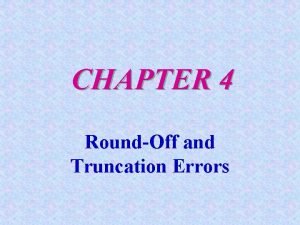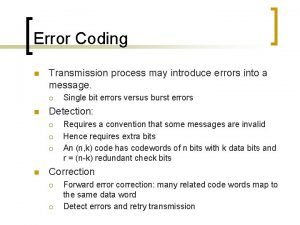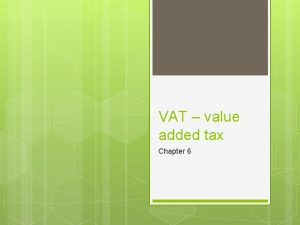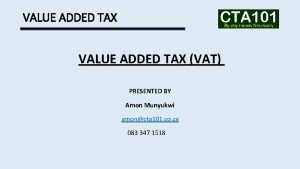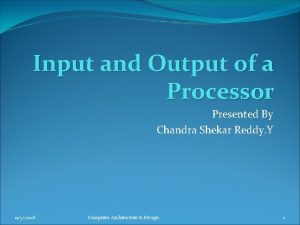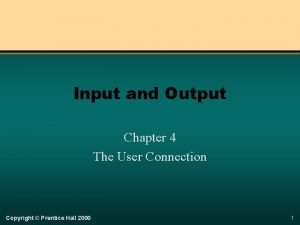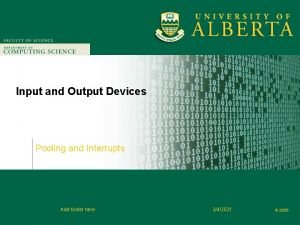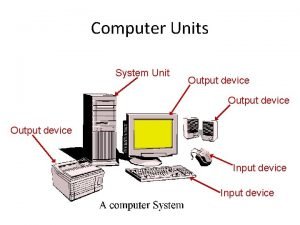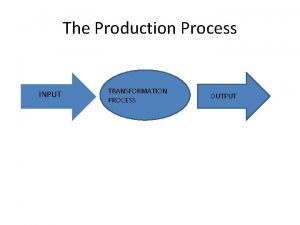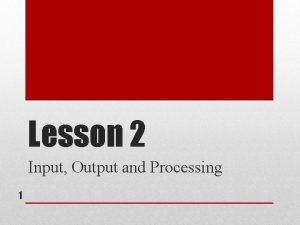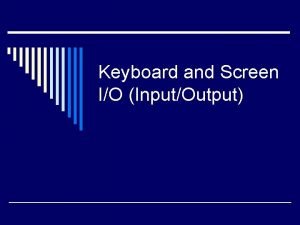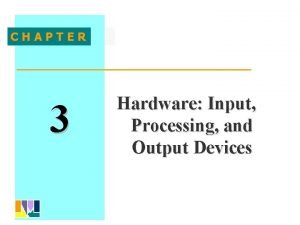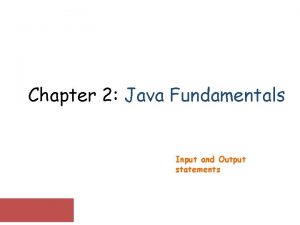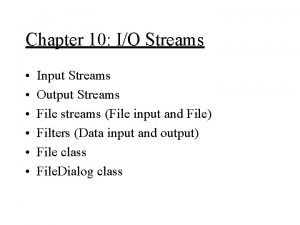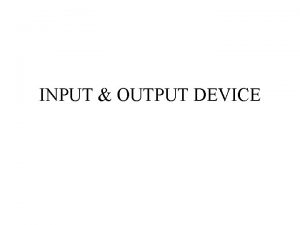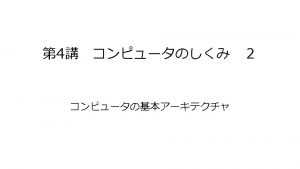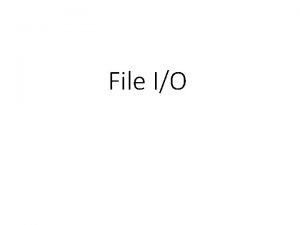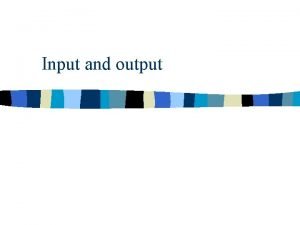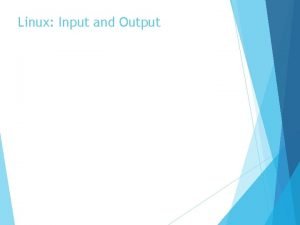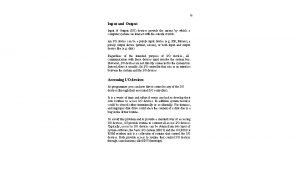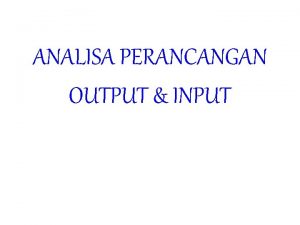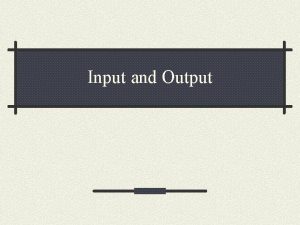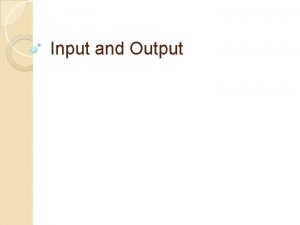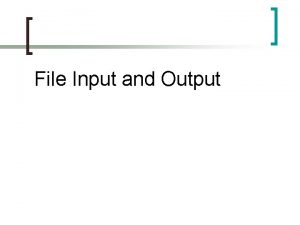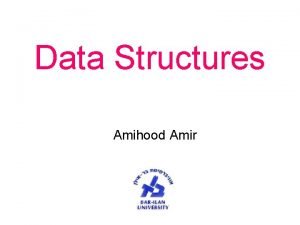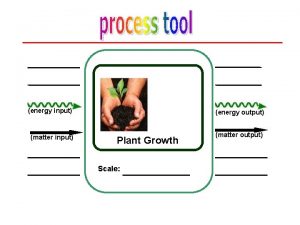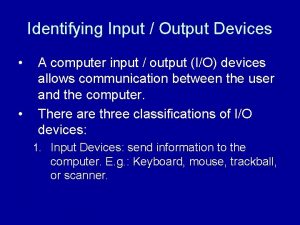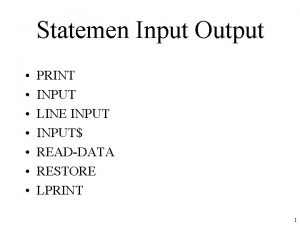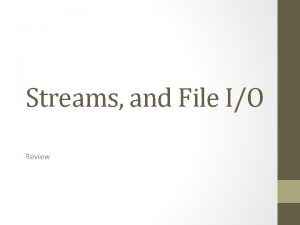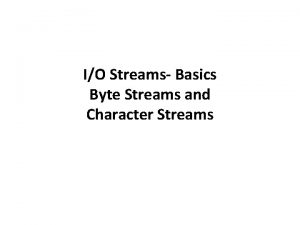Topics Input and Output Streams More Detailed Error















![getline Member Function getline(char s[ ], int max, char stop ='n') – char s[ getline Member Function getline(char s[ ], int max, char stop ='n') – char s[](https://slidetodoc.com/presentation_image_h2/1656aaf6abd80f281b46886b6a51166f/image-16.jpg)



















- Slides: 35

Topics • Input and Output Streams • More Detailed Error Testing • Member Functions for Reading and Writing Files • Binary Files • Creating Records with Structures • Random-Access Files • Opening a File for Both Input and Output Copyright © 2014, 2008 Pearson Education, Inc. Publishing as Pearson Addison-Wesley 13 -1

Input and Output Streams • Input Stream – data stream from which information can be read – Ex: cin and the keyboard – Use istream, ifstream, and istringstream objects to read data • Output Stream – data stream to which information can be written – Ex: cout and monitor screen – Use ostream, ofstream, and ostringstream objects to write data • Input/Output Stream – data stream that can be both read from and written to – Use fstream objects here Copyright © 2014, 2008 Pearson Education, Inc. Publishing as Pearson Addison-Wesley 13 -2

File Stream Classes • ifstream (open primarily for input), ofstream (open primarily for output), and fstream (open for either or both input and output) • All have open member function to connect the program to an external file • All have close member function to disconnect program from an external file when access is finished – Files should be open for as short a time as possible – Always close files before the program ends Copyright © 2014, 2008 Pearson Education, Inc. Publishing as Pearson Addison-Wesley 13 -3

The fstream Object • fstream object can be used for either input or output fstream file; • To use fstream for input, specify ios: : in as the second argument to open file. open("myfile. dat", ios: : in); • To use fstream for output, specify ios: : out as the second argument to open file. open("myfile. dat", ios: : out); Copyright © 2014, 2008 Pearson Education, Inc. Publishing as Pearson Addison-Wesley 13 -4

File Mode Flags ios: : app ios: : ate create new file, or append to end of existing file go to end of existing file; write anywhere ios: : binary read/write in binary mode (not text mode) ios: : in open for input ios: : out open for output Copyright © 2014, 2008 Pearson Education, Inc. Publishing as Pearson Addison-Wesley 13 -5

Opening a File for Input and Output • fstream object can be used for both input and output at the same time • Create the fstream object and specify both ios: : in and ios: : out as the second argument to the open member function fstream file; file. open("myfile. dat", ios: : in|ios: : out); Copyright © 2014, 2008 Pearson Education, Inc. Publishing as Pearson Addison-Wesley 13 -6

File Open Modes • File open modes specify how a file is opened and what can be done with the file once it is open • ios: : in and ios: : out are examples of file open modes, also called file mode flag • File modes can be combined and passed as second argument of open member function Copyright © 2014, 2008 Pearson Education, Inc. Publishing as Pearson Addison-Wesley 13 -7

File Open Modes • Not all combinations of file open modes make sense • ifstream and ofstream have default file open modes defined for them, hence the second parameter to their open member function is optional Copyright © 2014, 2008 Pearson Education, Inc. Publishing as Pearson Addison-Wesley 13 -8

Opening Files with Constructors • Stream constructors have overloaded versions that take the same parameters as open • These constructors open the file, eliminating the need for a separate call to open fstream in. File("myfile. dat", ios: : in); Copyright © 2014, 2008 Pearson Education, Inc. Publishing as Pearson Addison-Wesley 13 -9

Default File Open Modes • ofstream: – – open for output only file cannot be read from file is created if no file exists file contents erased if file exists • ifstream: – open for input only – file cannot be written to – open fails if the file does not exist Copyright © 2014, 2008 Pearson Education, Inc. Publishing as Pearson Addison-Wesley 13 -10

More Detailed Error Testing • Stream objects have error bits (flags) that are set by every operation to indicate success or failure of the operation, and the status of the stream • Stream member functions report on the settings of the flags Copyright © 2014, 2008 Pearson Education, Inc. Publishing as Pearson Addison-Wesley 13 -11

Error State Bits Can examine error state bits to determine file stream status ios: : eofbit set when end of file detected ios: : failbit set when operation failed ios: : hardfail set when an irrecoverable error occurred ios: : badbit set when invalid operation attempted ios: : goodbit set when no other bits are set Copyright © 2014, 2008 Pearson Education, Inc. Publishing as Pearson Addison-Wesley 13 -12

Error Bit Reporting Functions eof() true if eofbit set, false otherwise fail() true if failbit or hardfail set, false otherwise bad() true if badbit set, false otherwise good() true if goodbit set, false otherwise clear() clear all flags (no arguments), or clear a specific flag Copyright © 2014, 2008 Pearson Education, Inc. Publishing as Pearson Addison-Wesley 13 -13

Detecting File Operation Errors • The file handle is set to true if a file operation succeeds. It is set to false when a file operation fails • Test the status of the stream by testing the file handle: in. File. open("myfile"); if (!in. File) { cout << "Can't open file"; exit(1); } Copyright © 2014, 2008 Pearson Education, Inc. Publishing as Pearson Addison-Wesley 13 -14

Member Functions for Reading and Writing Files Unlike the extraction operator >>, these reading functions do not skip whitespace: getline: read a line of input get: reads a single character seekg: goes to beginning of input file Copyright © 2014, 2008 Pearson Education, Inc. Publishing as Pearson Addison-Wesley 13 -15
![getline Member Function getlinechar s int max char stop n char s getline Member Function getline(char s[ ], int max, char stop ='n') – char s[](https://slidetodoc.com/presentation_image_h2/1656aaf6abd80f281b46886b6a51166f/image-16.jpg)
getline Member Function getline(char s[ ], int max, char stop ='n') – char s[ ]: Character array to hold input – int max : 1 more than the maximum number of characters to read – char stop: Terminator to stop at if encountered before max number of characters is read. Optional, default is 'n' Copyright © 2014, 2008 Pearson Education, Inc. Publishing as Pearson Addison-Wesley 13 -16

Single Character Input get(char &ch) Read a single character from the input stream and put it in ch. Does not skip whitespace. ifstream in. File; char ch; in. File. open("my. File"); in. File. get(ch); cout << "Got " << ch; Copyright © 2014, 2008 Pearson Education, Inc. Publishing as Pearson Addison-Wesley 13 -17

Single Character Input, Again get() Read a single character from the input stream and return the character. Does not skip whitespace. ifstream in. File; char ch; in. File. open("my. File"); ch = in. File. get(); cout << "Got " << ch; Copyright © 2014, 2008 Pearson Education, Inc. Publishing as Pearson Addison-Wesley 13 -18

Single Character Output • put(char ch) Output a character to a file • Example ofstream out. File; out. File. open("myfile"); out. File. put('G'); Copyright © 2014, 2008 Pearson Education, Inc. Publishing as Pearson Addison-Wesley 13 -19

Example of Single Character I/O To copy an input file to an output file char ch; infile. get(ch); while (!infile. fail()) { outfile. put(ch); infile. get(ch); } infile. close(); outfile. close(); Copyright © 2014, 2008 Pearson Education, Inc. Publishing as Pearson Addison-Wesley 13 -20

Moving About in Input Files seekg(offset, place) Move to a given offset relative to a given place in the file – offset: number of bytes from place, specified as a long – place: location in file from which to compute offset ios: : beginning of file ios: : end of the file ios: : current position in file Copyright © 2014, 2008 Pearson Education, Inc. Publishing as Pearson Addison-Wesley 13 -21

Rewinding a File • To move to the beginning of file, seek to an offset of zero from beginning of file in. File. seekg(0 L, ios: : beg); • Error or eof bits will block seeking to the beginning of file. Clear bits first: in. File. clear(); in. File. seekg(0 L, ios: : beg); Copyright © 2014, 2008 Pearson Education, Inc. Publishing as Pearson Addison-Wesley 13 -22

13. 4 Binary Files • Binary files store data in the same format that a computer has in main memory • Text files store data in which numeric values have been converted into strings of ASCII characters • Files are opened in text mode (as text files) by default Copyright © 2014, 2008 Pearson Education, Inc. Publishing as Pearson Addison-Wesley 13 -23

Using Binary Files • Pass the ios: : binary flag to the open member function to open a file in binary mode infile. open("myfile. dat", ios: : binary); • Reading and writing of binary files requires special read and write member functions read(char *buffer, int number. Bytes) write(char *buffer, int number. Bytes) Copyright © 2014, 2008 Pearson Education, Inc. Publishing as Pearson Addison-Wesley 13 -24

Using read and write read(char *buffer, int number. Bytes) write(char *buffer, int number. Bytes) • buffer: holds an array of bytes to transfer between memory and the file • number. Bytes: the number of bytes to transfer Address of the buffer needs to be cast to char * using reinterpret_cast <char *> Copyright © 2014, 2008 Pearson Education, Inc. Publishing as Pearson Addison-Wesley 13 -25

Using write To write an array of 2 doubles to a binary file ofstream out. File("myfile", ios: binary); double d[2] = {12. 3, 34. 5}; out. File. write((char*)(d), sizeof(d)); Copyright © 2014, 2008 Pearson Education, Inc. Publishing as Pearson Addison-Wesley 13 -26

Using read To read two 2 doubles from a binary file into an array ifstream in. File("myfile", ios: binary); const int DSIZE = 10; double data[DSIZE]; in. File. read( (char *)(data), 2*sizeof(double)); // only data[0] and data[1] contain // values Copyright © 2014, 2008 Pearson Education, Inc. Publishing as Pearson Addison-Wesley 13 -27

13. 5 Creating Records with Structures • Can write structures to, read structures from files • To work with structures and files, – use binary file flag upon open – use read, write member functions Copyright © 2014, 2008 Pearson Education, Inc. Publishing as Pearson Addison-Wesley 13 -28

Creating Records with Structures struct Test. Score { int student. Id; float score; char grade; }; Test. Score test 1[20]; . . . // write out test 1 array to a file grade. File. write( reinterpret_cast<char*>(test 1), sizeof(test 1)); Copyright © 2014, 2008 Pearson Education, Inc. Publishing as Pearson Addison-Wesley 13 -29

13. 6 Random-Access Files • Sequential access: start at beginning of file and go through data the in file, in order, to the end of the file – to access 100 th entry in file, go through 99 preceding entries first • Random access: access data in a file in any order – can access 100 th entry directly Copyright © 2014, 2008 Pearson Education, Inc. Publishing as Pearson Addison-Wesley 13 -30

Random Access Member Functions • seekg (seek get): used with input files • seekp (seek put): used with output files Both are used to go to a specific position in a file Copyright © 2014, 2008 Pearson Education, Inc. Publishing as Pearson Addison-Wesley 13 -31

Random Access Member Functions seekg(offset, place) seekp(offset, place) offset: long integer specifying number of bytes to move place: starting point for the move, specified by ios: beg, ios: : cur or ios: end Copyright © 2014, 2008 Pearson Education, Inc. Publishing as Pearson Addison-Wesley 13 -32

Random-Access Member Functions • Examples: // Set read position 25 bytes // after beginning of file in. Data. seekg(25 L, ios: : beg); // Set write position 10 bytes // before current position out. Data. seekp(-10 L, ios: : cur); Copyright © 2014, 2008 Pearson Education, Inc. Publishing as Pearson Addison-Wesley 13 -33

Random Access Information • tellg member function: return current byte position in input file, as a long where. Am. I; where. Am. I = in. File. tellg(); • tellp member function: return current byte position in output file, as a long where. Am. I = out. File. tellp(); Copyright © 2014, 2008 Pearson Education, Inc. Publishing as Pearson Addison-Wesley 13 -34

13. 7 Opening a File for Both Input and Output • A file can be open for input and output simultaneously • Supports updating a file: – read data from file into memory – update data – write data back to file • Use fstream for file object definition: fstream grade. List("grades. dat", ios: : in | ios: : out); Copyright © 2014, 2008 Pearson Education, Inc. Publishing as Pearson Addison-Wesley 13 -35
 Lirik lagu more more more we praise you
Lirik lagu more more more we praise you More more more i want more more more more we praise you
More more more i want more more more more we praise you Input design and output design
Input design and output design Advantages and disadvantages of pointing devices
Advantages and disadvantages of pointing devices Type 1 type 2 error power
Type 1 type 2 error power Absolute error of ruler
Absolute error of ruler Round off error and truncation error
Round off error and truncation error Difference between error detection and error correction
Difference between error detection and error correction How do you do percent error
How do you do percent error Vr input device
Vr input device Input vat and output vat
Input vat and output vat Vat input meaning
Vat input meaning Vat input
Vat input What is output
What is output What are input devices and output devices
What are input devices and output devices Conclusion of output devices
Conclusion of output devices Purpose of output devices
Purpose of output devices Touchpad input or output
Touchpad input or output A wand reader is a type of recognition device
A wand reader is a type of recognition device Output devices conclusion
Output devices conclusion Human input output channels
Human input output channels Computer science input and output
Computer science input and output Most abstract input and output in software engineering
Most abstract input and output in software engineering System unit device
System unit device Touch screen input and output
Touch screen input and output Input of krebs cycle
Input of krebs cycle Vr output devices
Vr output devices Citric acid cycle also called
Citric acid cycle also called Input and output in production process
Input and output in production process Analog input and output devices
Analog input and output devices _____ and _______are the basic output primitives.
_____ and _______are the basic output primitives. Keyboard.next java
Keyboard.next java Input output domain and range
Input output domain and range Computer input devices drawing
Computer input devices drawing Input and output hardware
Input and output hardware Java input and output statements
Java input and output statements






